$DEFI Trending, Business Insider Featuring $DEFI, Q4 2025 and Q1 2026 Developments and MORE! – October Development Update
October was a month of strong growth and ...
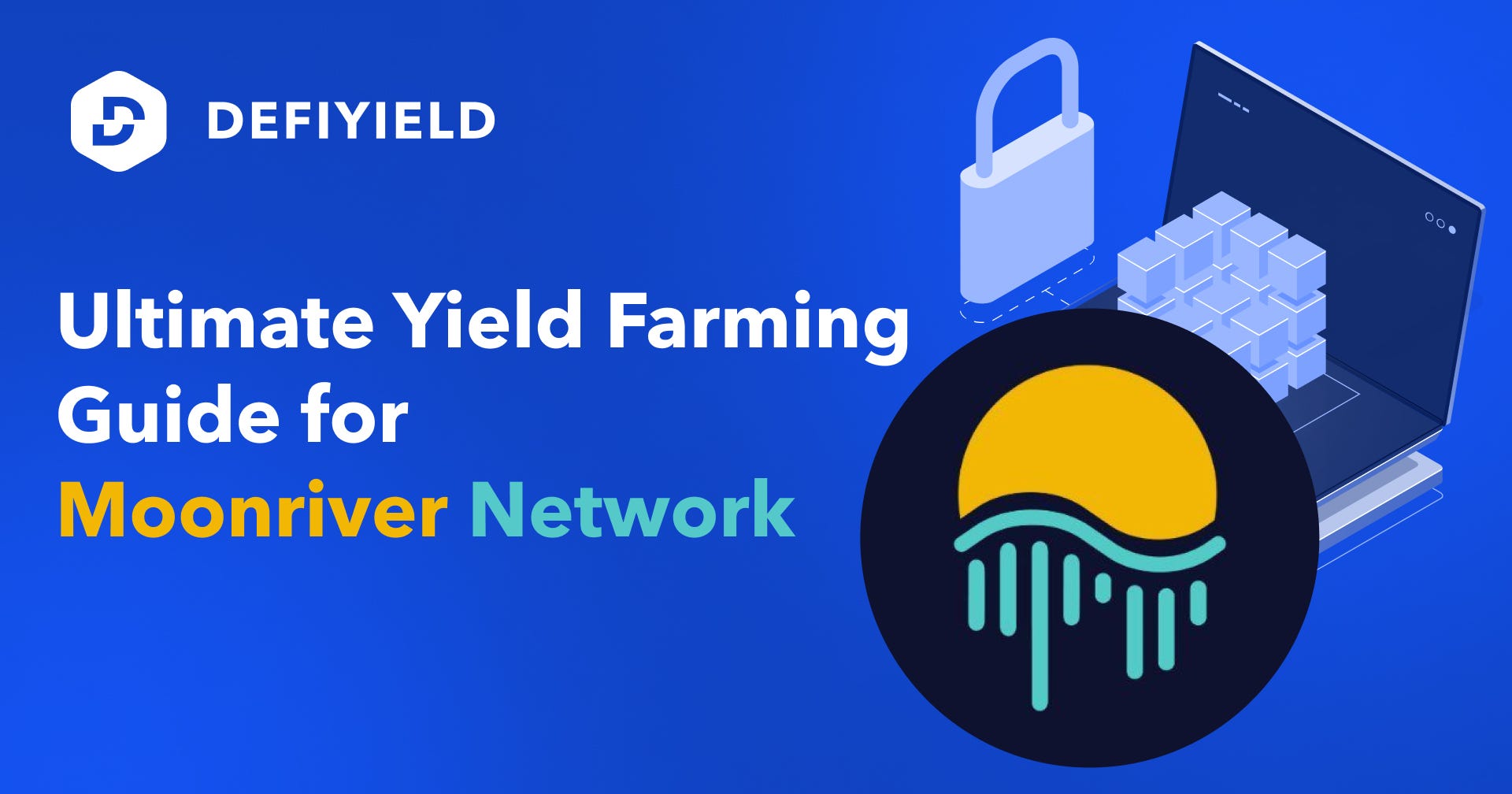
There’s lots of excitement about Polkadot but the parachains that will power services and applications on this network are only now in the early stages of their development. That’s why Kusama, Polkadot’s canary network, and the parachains that are operational on it right now are gathering real momentum.
Step forward the Moonriver Network. This decentralized smart contract platform, which exists on Kusama, is the latest need-to-know project for staking and yield farming enthusiasts.
If that’s you, this guide will be a perfect starting point for your journey into Moonriver. It includes all you need to know about this companion network to Moonbeam, such as its main architectural features and benefits, as well as all the staking and yield farming opportunities you need to know.
So, if you’re interested in what yield generation opportunities exist in this next-generation of blockchain ecosystems, this is the guide for you!
What is the Moonriver Network?
Moonriver on Kusama is like Moonbeam on Polkadot
Moonriver’s architecture
Moonriver governance
$MOVR Token
The Moonriver Network Ecosystem
Bridges for Moonriver Network
Wallets for Moonriver Network
Hot wallets
Cold Wallets
Hardware Wallets
Moonriver on De.Fi
Yield Farming on Moonriver Network
Should I use Moonriver Network for Staking and Yield Farming?
Moonriver is a decentralized smart contract platform on Kusama. It was announced in April 2020 and launched as a parachain on Kusama in June 2021.
Its companion network on Polkadot is Moonbeam. If you’re not aware of Polkadot’s design, including what parachains are and how Kusama fits into the ecosystem, it’s worth understanding this before digging deeper into Moonriver’s features and benefits.
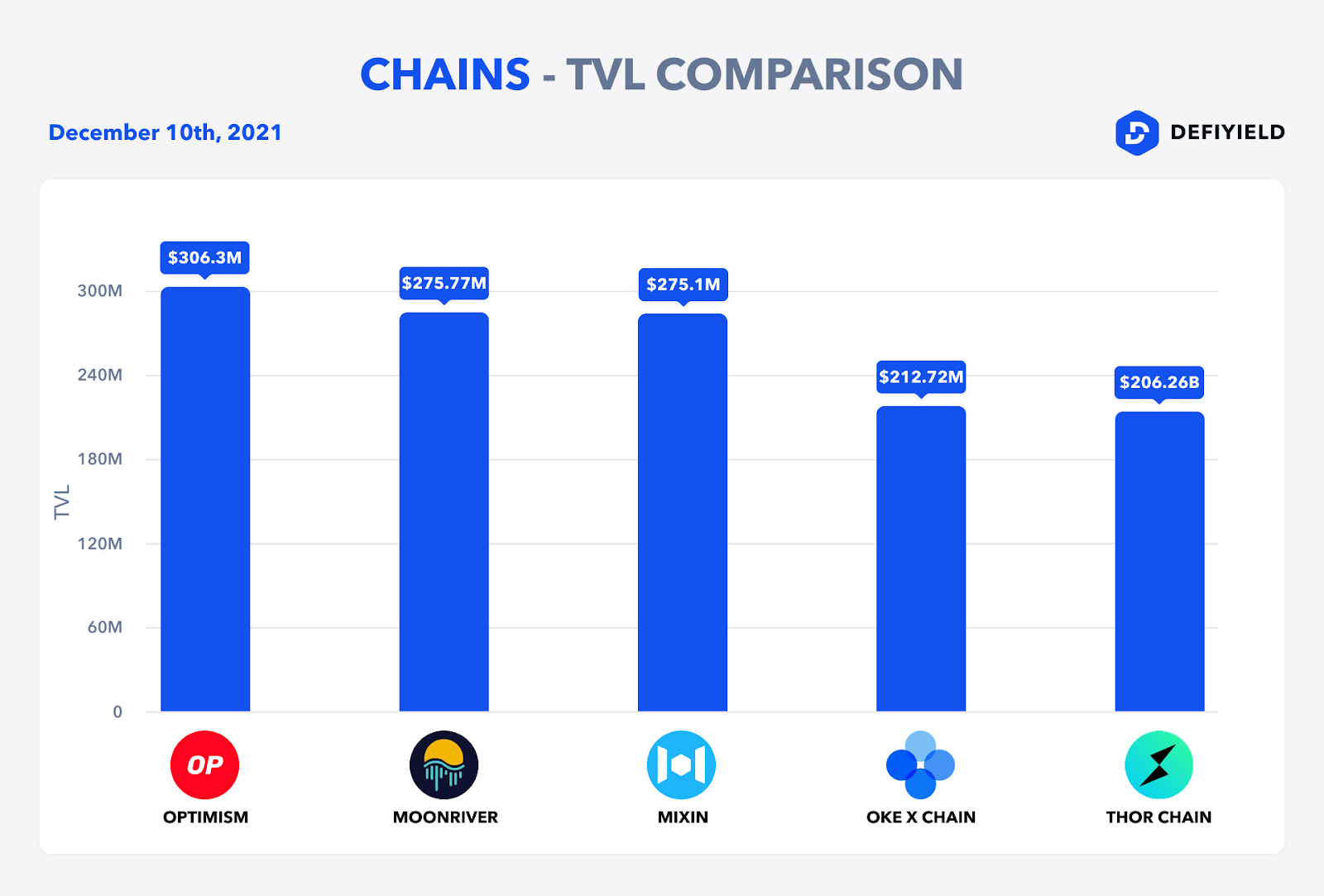
Polkadot is an ecosystem for building blockchains and blockchain applications using the Substrate framework.
There is a main relay chain that all parachains connect to. Parachains are what the blockchains that are built using the Substrate framework are referred to as. To ensure the relay chain, parachains and all other aspects of the Polkadot ecosystem function as effectively and securely as possible, there is also a canary network where everything can be tested and verified before it is deployed in the Polkadot network.
Polkadot’s canary network is the Kusama network. It is a network in its own right but it mirrors the relay chain and parachain architecture of Polkadot. Moonriver is the decentralized smart contract platform on Kusama that will be Moonbeam when deployed on Polkadot. There is also a testnet shared by Moonbeam and Moonriver called Moonrock, which is a parachain on Polkadot’s Rococo testnet.
Moonbeam, Moonriver and Moonrock are products of the development firm PureStake.
“Moonbeam and Moonriver are developer-oriented infrastructure platforms. These platforms provide open and permissionless infrastructure for builders of Web3-based applications to express themselves and to solve problems in novel ways using Web3 technologies.” — Derek Yoo, CEO of PureStake
Moonriver is intended as a smart contract platform where developers can deploy their Ethereum Dapps in a substrate environment without having to make a lot of smart contract changes. They can deploy existing Solidity smart contracts and protocol frontends to Moonriver.
In this way, it is Ethereum-compatible and has been designed so many of the tools developers recognise from Ethereum are available to use.
These include metamask, hardhat, waffle and truffle, as well as support for familiar smart contract languages like Solidity, Hyper and others that compile to EVM bytecode. There are also pre-built integrations for assets like DOT, ERC20 tokens and common infrastructure tools like Chainlink and The Graph, as well as a Web3-compatible API.
Having said all that, Moonbeam is not just an EVM implementation, as it also extends base Ethereum functions through features like staking, on-chain governance and crosschain integrations.
As mentioned, Kusama has the same architecture and technology features as Polkadot, with a relay chain responsible for shared security, consensus and transaction settlements. The Moonriver parachain interacts with the Kusama relay chain in this way.
Moonriver is built in Rust using the Substrate framework and it has adopted many existing blockchain services and functionality, such as data structures, peer-to-peer networking, consensus mechanisms, accounts, assets and balances.
It has a number of benefits that are worth mentioning, including:
This allows Ethereum-based smart contracts to be deployed within the Kusama environment with minimal changes required.
This enables the use of popular Ethereum and Web3 tools and applications and infrastructure, such as metamask.
These allow for cross chain token transfers and state visibility to a range of existing networks, including Ethereum and Bitcoin.
To bridge your tokens, you can use Anyswap or Solarbeam bridge (powered by Anyswap. However SolarBeam does not support hardware wallets).
Integrations to assets such as DOT and ERC20 tokens, as well as make Moonriver more interoperable and attractive for developers.
Moonriver uses on-chain governance, which involves a tiered structure and token weighted voting, with the ultimate goal of allowing the majority of tokens on the network to make key decisions.
Proposals need to be seconded for them to reach the referendum stage, at which point token staking and conviction voting mechanisms are used to determine the outcome. Spending proposals need to be approved by the Council, which is a group of elected individuals with special voting rights.
The Council also has the power to elect a Technical Committee, which is a group that can fast track emergency voting and urgent implementations.
MOVR is the utility token of the Moonriver Network. It is used to participate in consensus through staking, to pay for transactions and to vote in governance proposals.
As of 10 November 2021, MOVR has a maximum supply of 10,157,771, a price of $330.32 and a current market cap of $755,988,973 (according to CoinGecko data).
[SPACE FOR TOKEN CHART IMAGE]
With Moonriver having been specifically designed so that developers can deploy their Ethereum Dapps in a substrate environment without having to make a lot of smart contract changes, there are a lot of project teams that have taken up this opportunity.
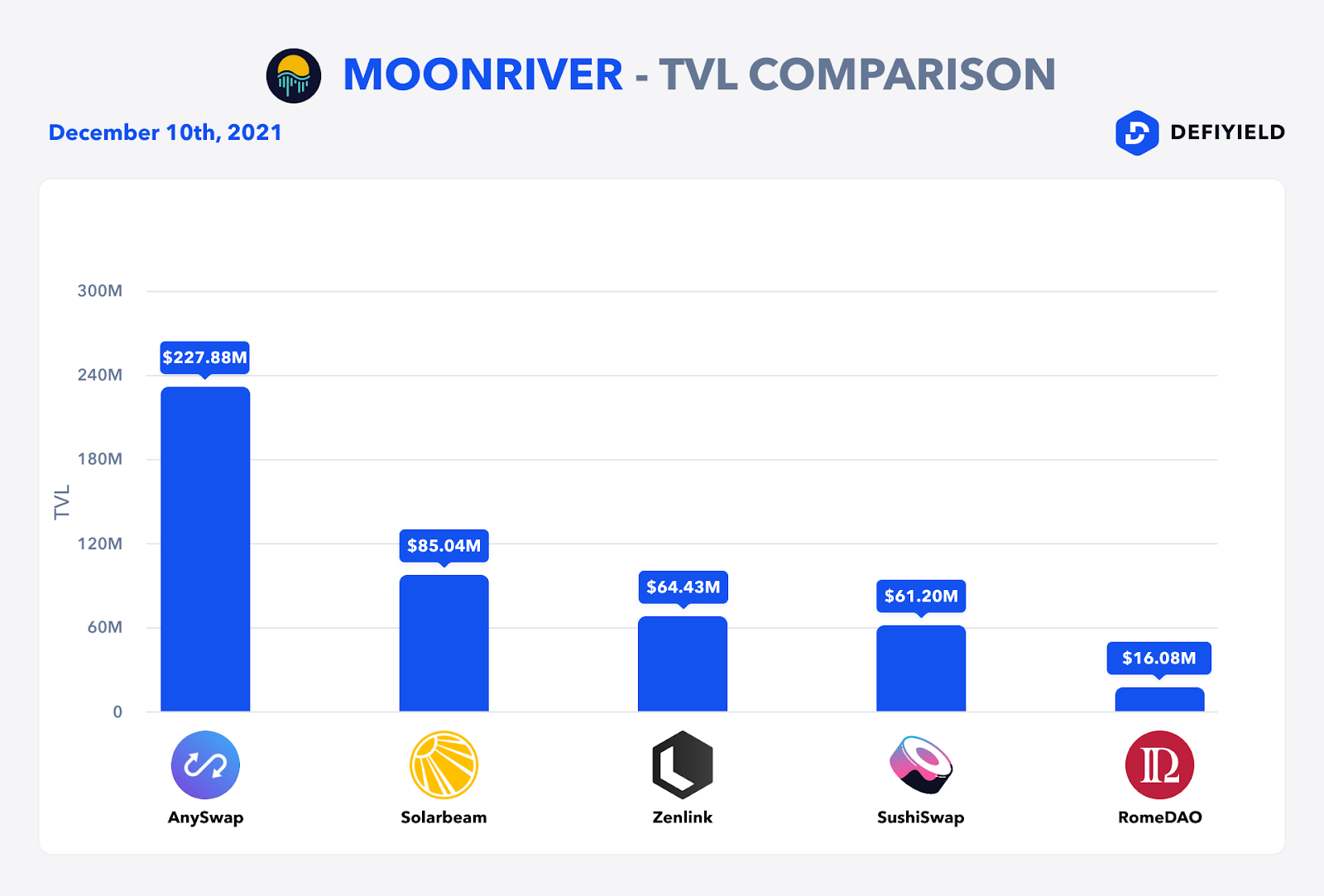
These include everything from APIs, infrastructure and bridges to oracles, wallets and NFTs. In terms of DeFi, well known names in the Moonriver ecosystem include Sushi, Balancer and Lido.
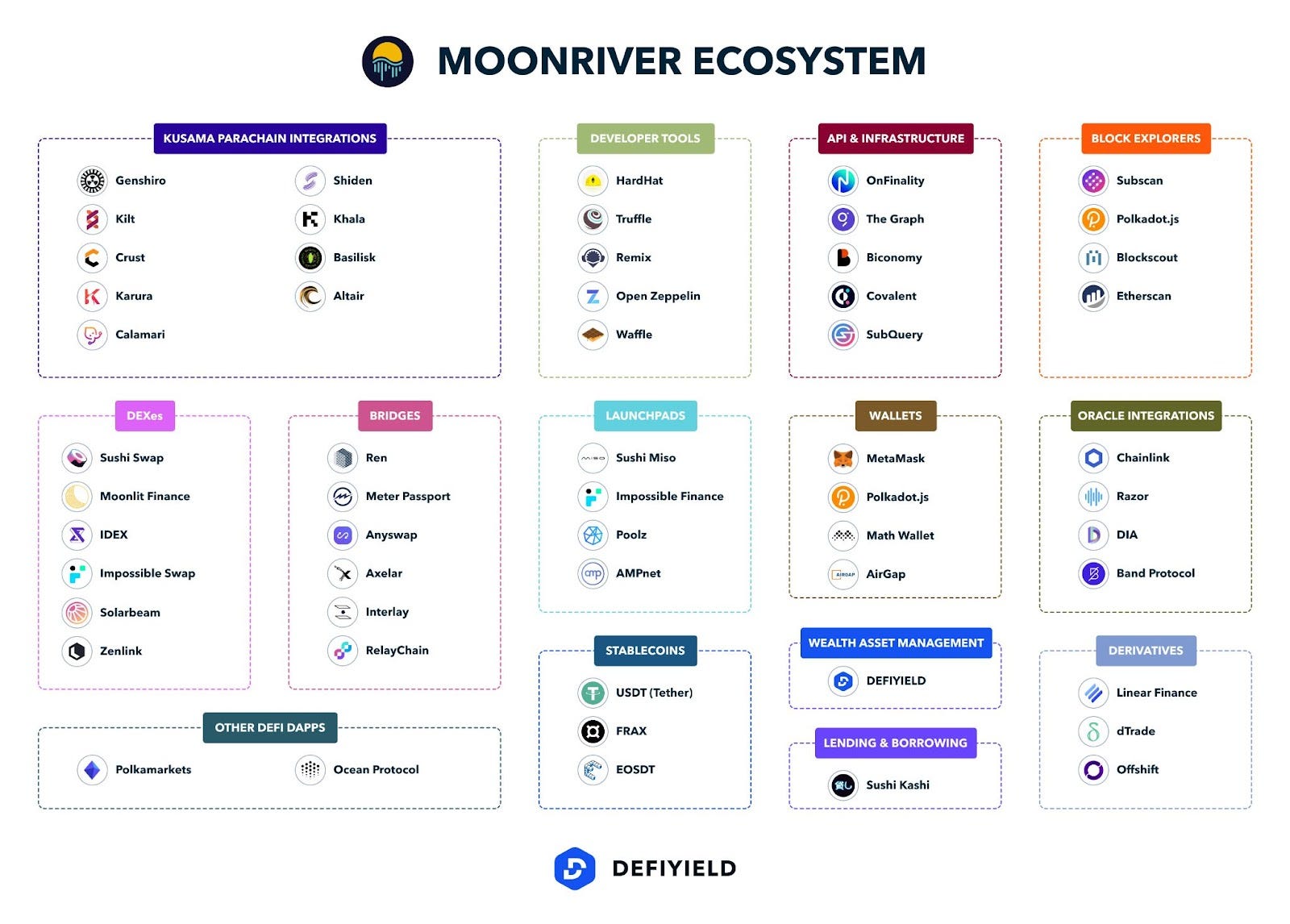
There are a number of ways to bridge assets to and from Moonriver Network, with some of them described below.
Meter Passport allows assets and information to flow from one blockchain to another. It connects Moonriver to Ethereum, Binance Smart Chain, Polygon and Meter.
Solarbeam is a multifunctional DeFi app for Moonriver. It includes a bridge tool that allows you to transfer to and from Ethereum and Binance Smart Chain.
RelayChain lets you make cross-chain transfers between a range of networks, including Moonriver, Ethereum, Polygon, Binance Smart Chain, Avalanche and Huobi Eco Chain.
Moonriver (like Moonbeam) uses the unified account system that makes it compatible with Ethereum. This means an Ethereum wallet can generate a valid address for Moonriver so, if you already have an Ethereum wallet, you also already have a Moonriver wallet. All you have to do is add the Moonriver network to your account to interact with the chain.
Below, we explain how you can create a Moonriver address if you don’t have one already.
For detailed explanations on different types of wallets, including hot and cold wallet definitions, refer to our DeFi Bible: The Wall Street Era Is Over!
Metamask is available as a browser extension and a mobile application. It is also compatible with hardware wallets, such as Ledger. You can add Moonriver to MetaMask, as shown in the “Switch network” image below.
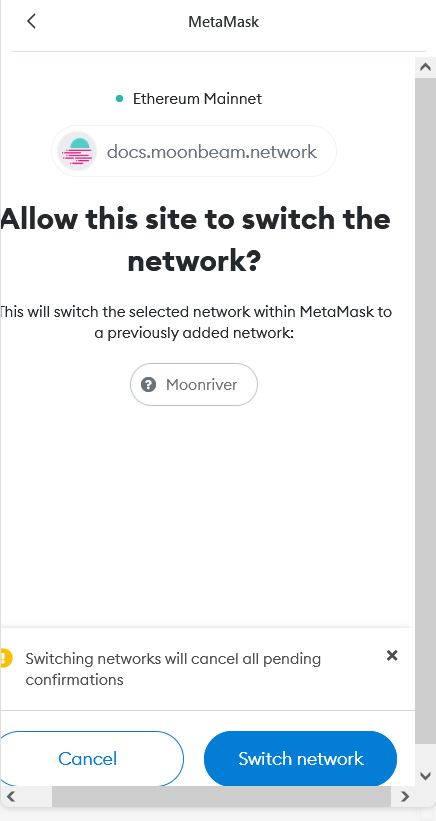
Alternatively, you can add it manually by clicking on the “Add Network” in the Netoworks drop-down.
You then need to insert the following information:
Once you’ve followed these steps, you’ll be able to use your funds in Metamask.
Math Wallet is available as a browser extension, mobile application and web wallet. It is compatible with hardware wallets such as Ledger.
You can configure the Math Wallet to the Moonriver Chain and, once installed, the Math Wallet extension simply changes its network to Moonriver and creates a wallet. Part of the process is shown in the image below.
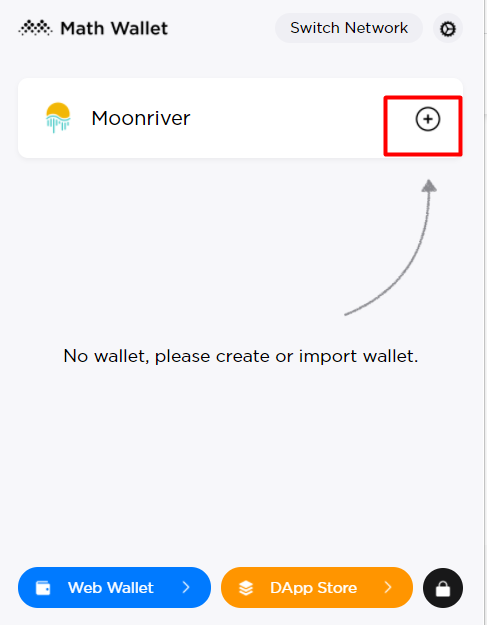
Nifty is a forked Metamask wallet that is available as a browser extension. It allows you to interact with an expanded list of networks, connect to the decentralized node network and more.
To configure Nifty for the Moonriver Network, you have to open the network settings and choose “Custom RPC”, as shown in the image below.
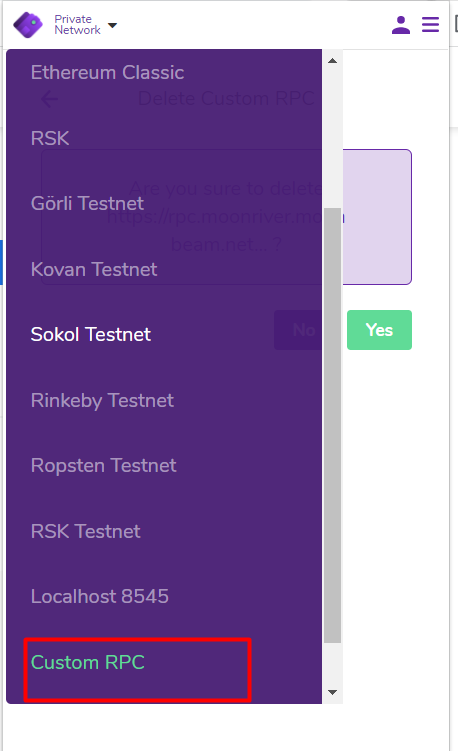
To configure this cold wallet, you will have to go through more steps than with a hot wallet. That’s because cold wallets are more secure, as they allow you to store access to funds offline, with all transaction signing also occurring offline.
To find out more, you can read this guide to creating a Moonriver/Ethereum address.
You can use Moonriver with Trezor and Ledger but, in both cases, you will need to import the wallet to Metamask to sign transactions. To find out more, you can read the guide to using Trezor with Moonbeam or the guide to using Ledger with Moonbeam (Moonbeam being Moonriver’s companion network), which can be found in the Moonbeam Docs.
Recently we integrated Moonriver on our cross-chain management dashboard. You can track your balances, prices, tokens, and 24-hour profit and loss!
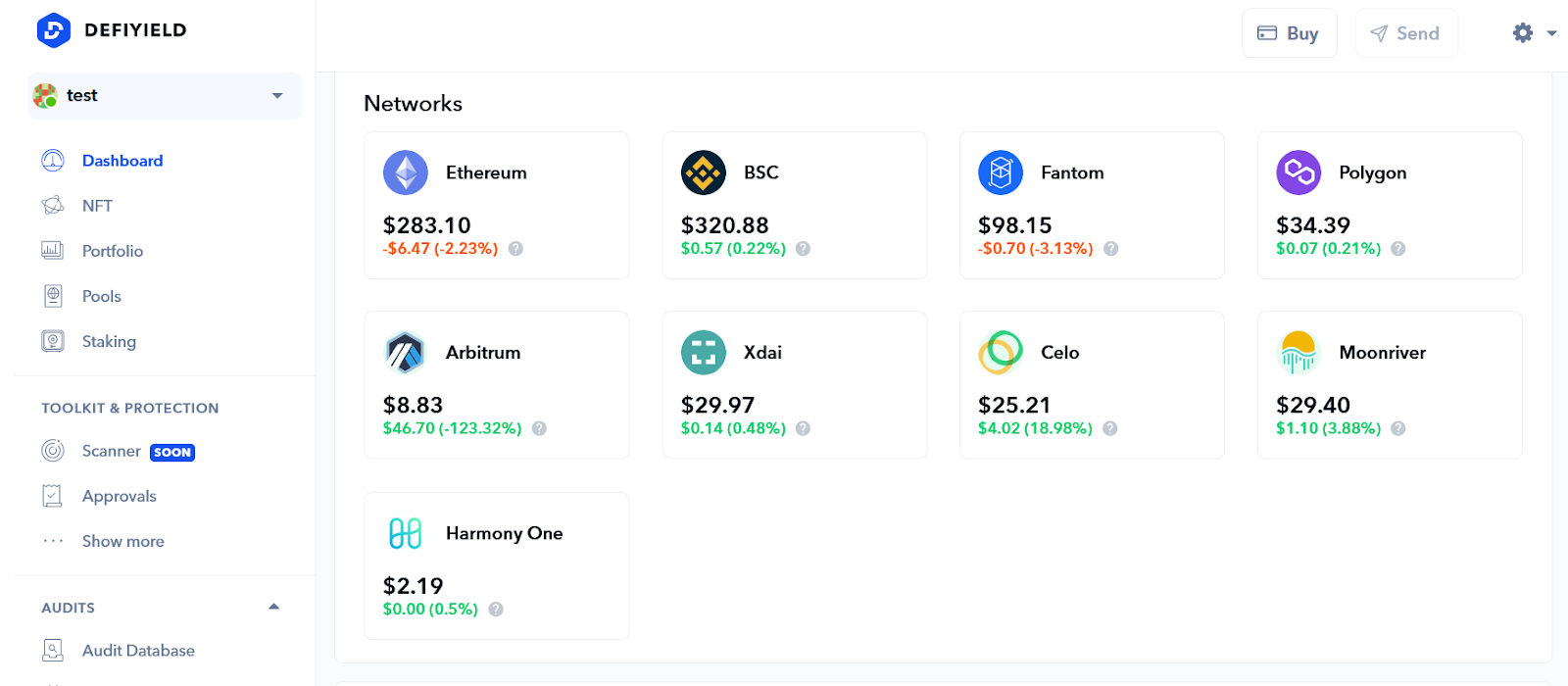
You may have noticed that we’re adding Moonriver pools to the De.Fi #dailyAPY infographics, which we share on Twitter and Telegram.
Projects with farms on Moonriver include KogeFarm, MoonFarm, SolarBeam, Moonkafe and many more.
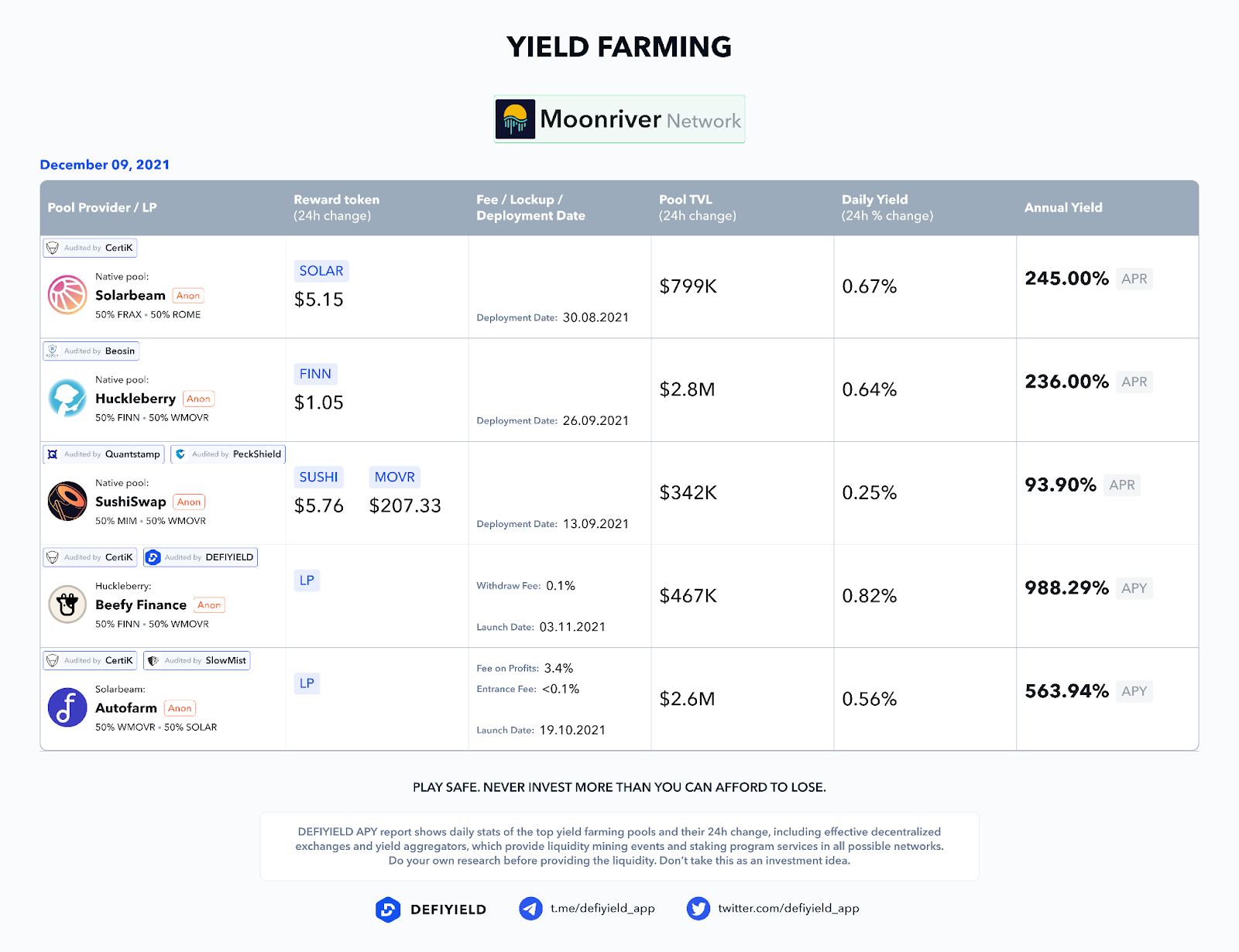
In this guide, we will explain how to yield farming on Solarbeam.
In today’s Yield Farming Guide we will use Solarbeam for liquidity provision.
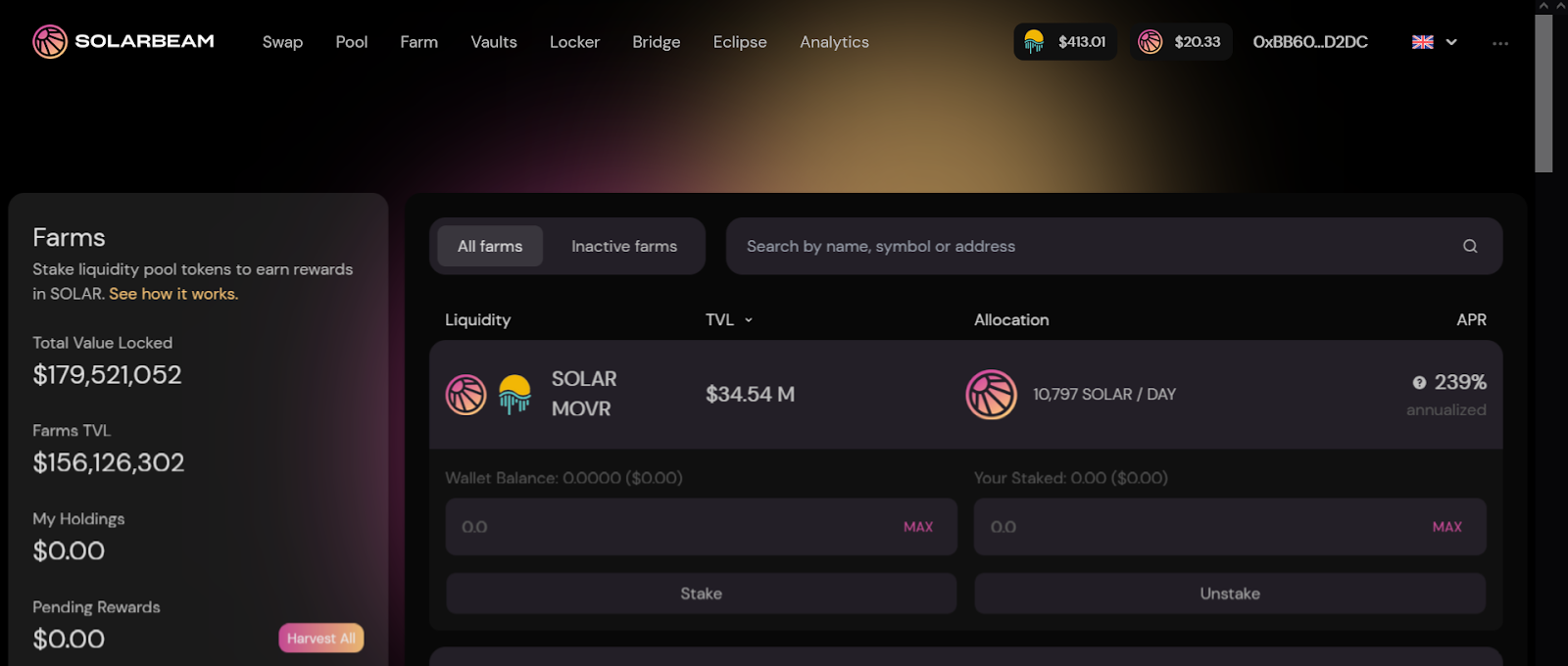
Choose the pool you want to provide liquidity. In our example we will use SOLAR/MOVR one.
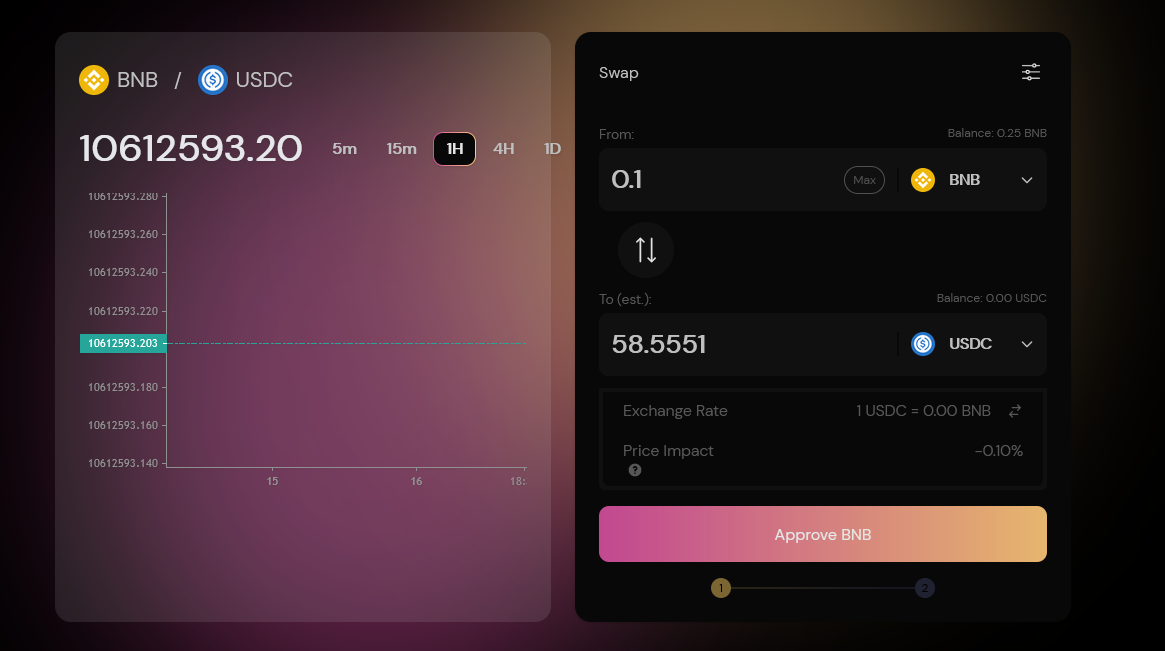
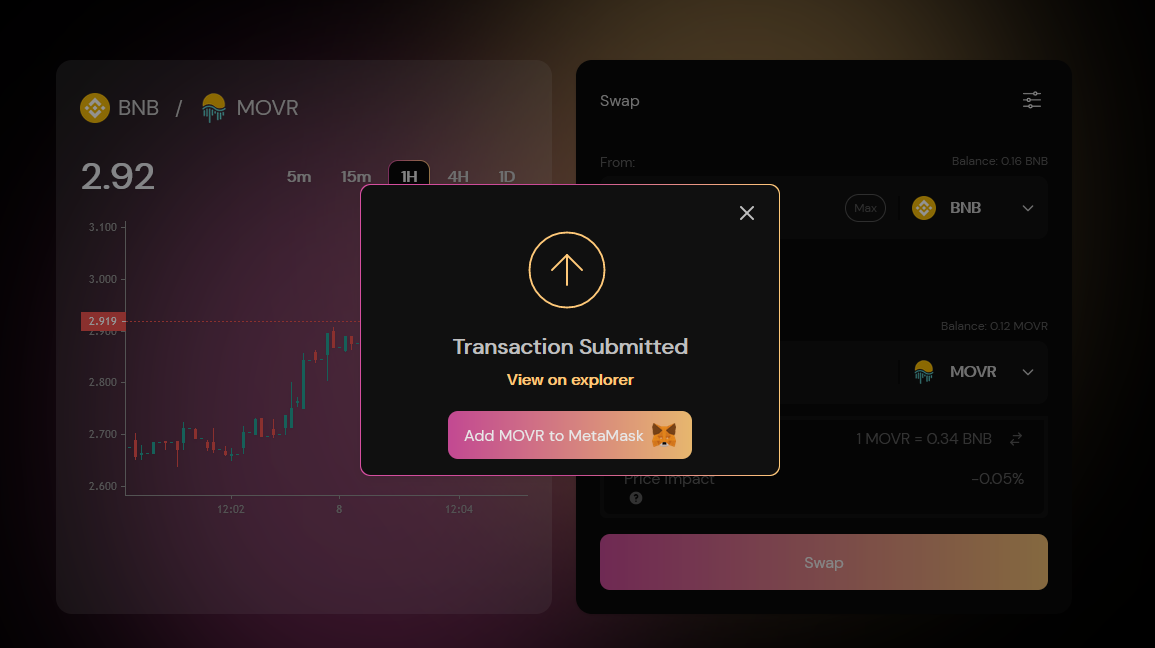
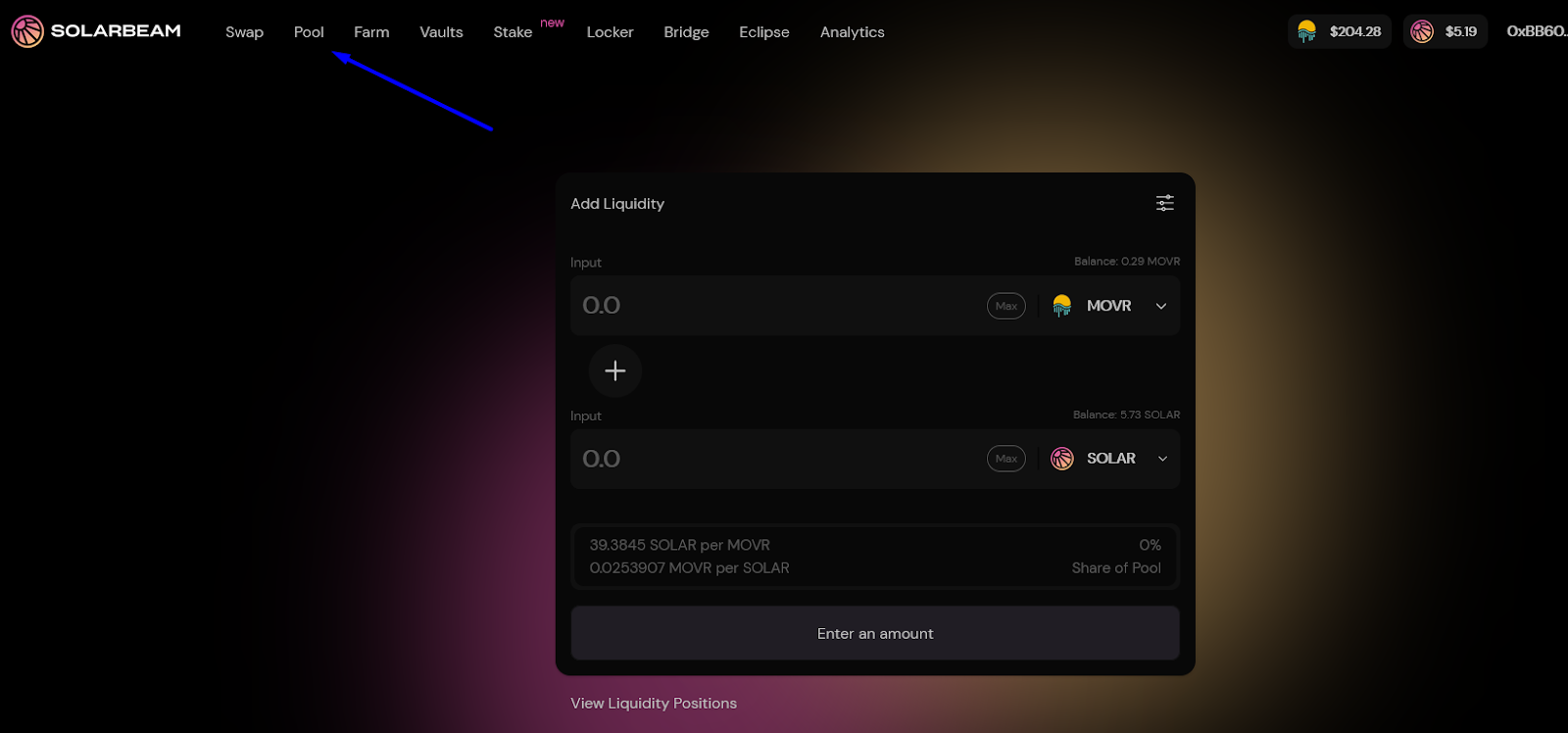
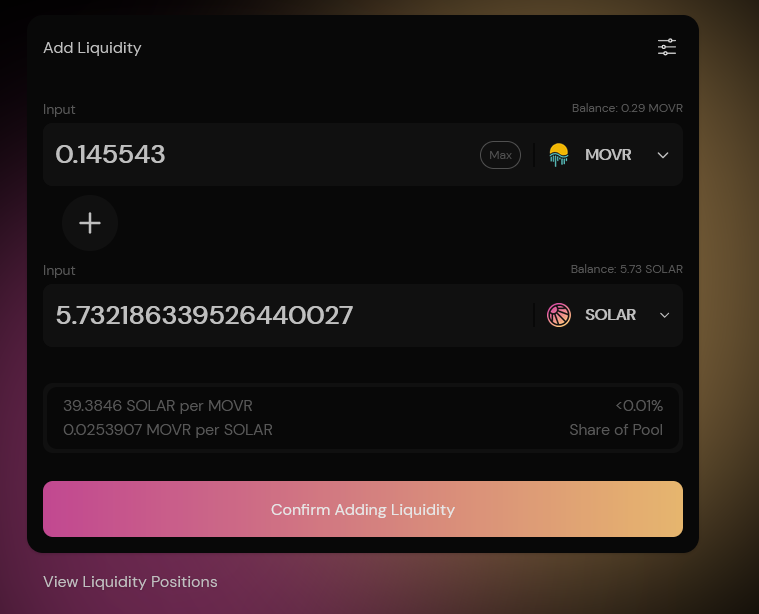
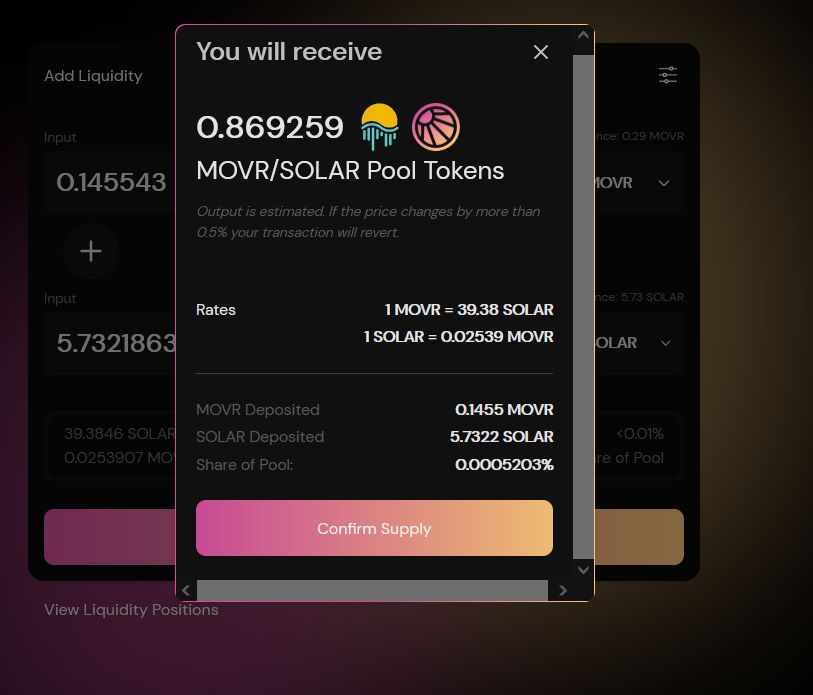
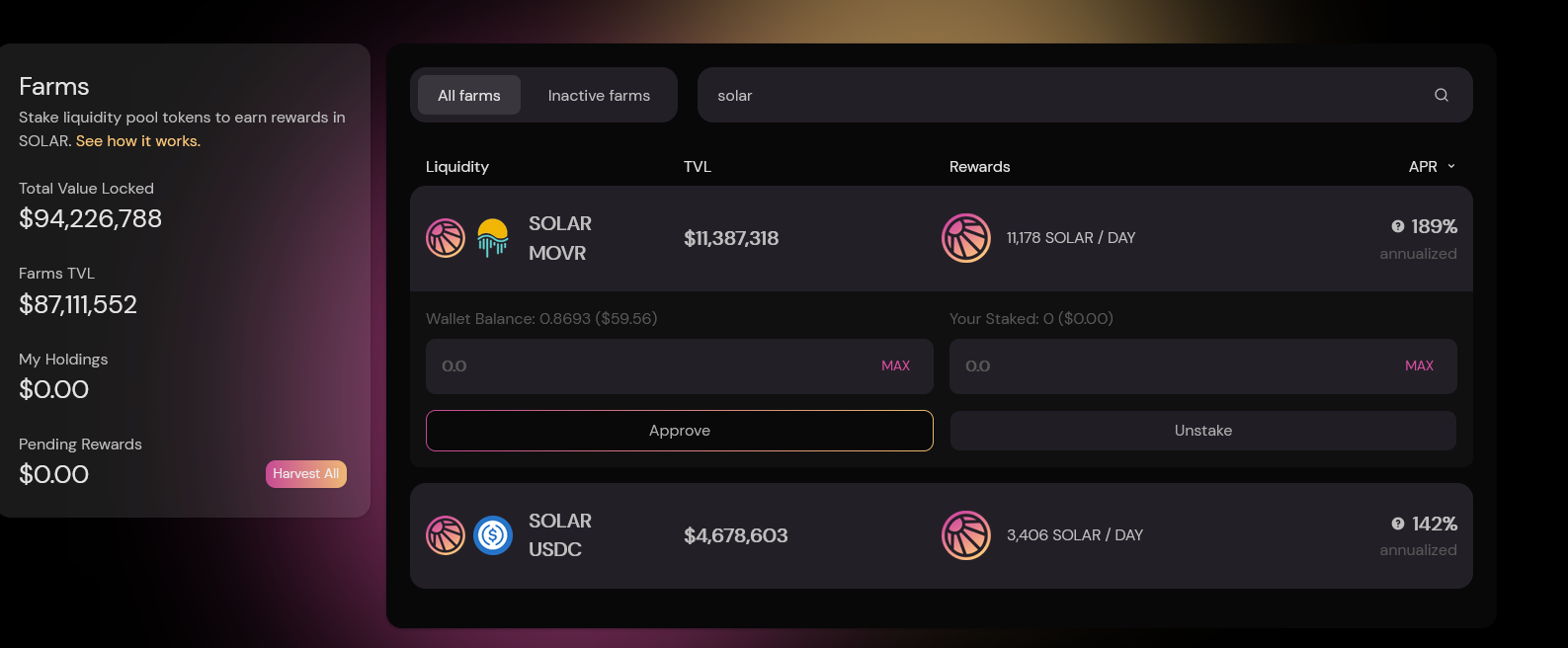
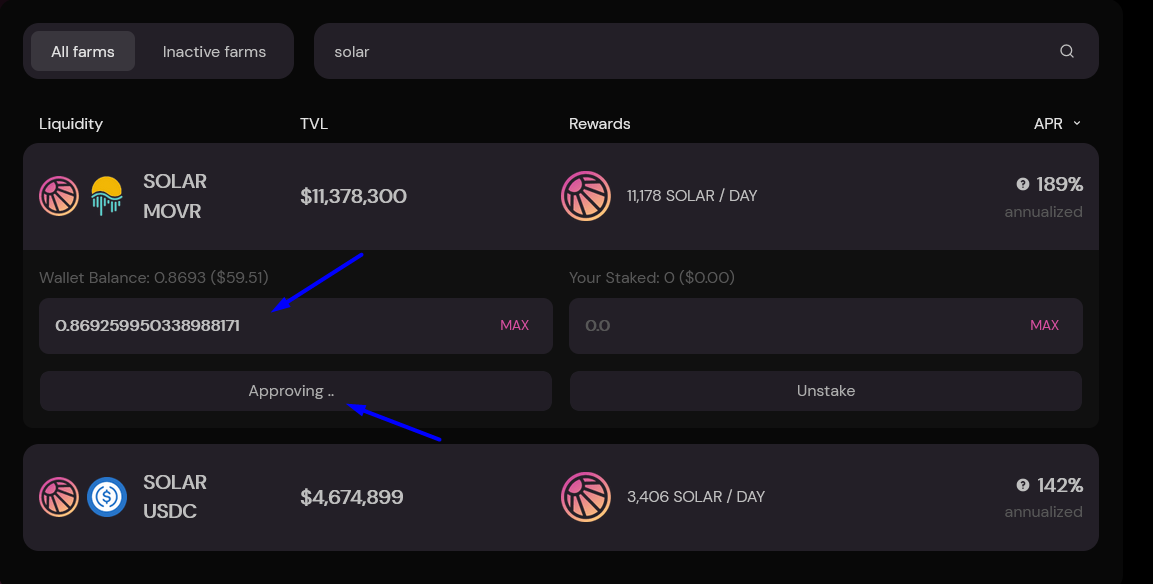
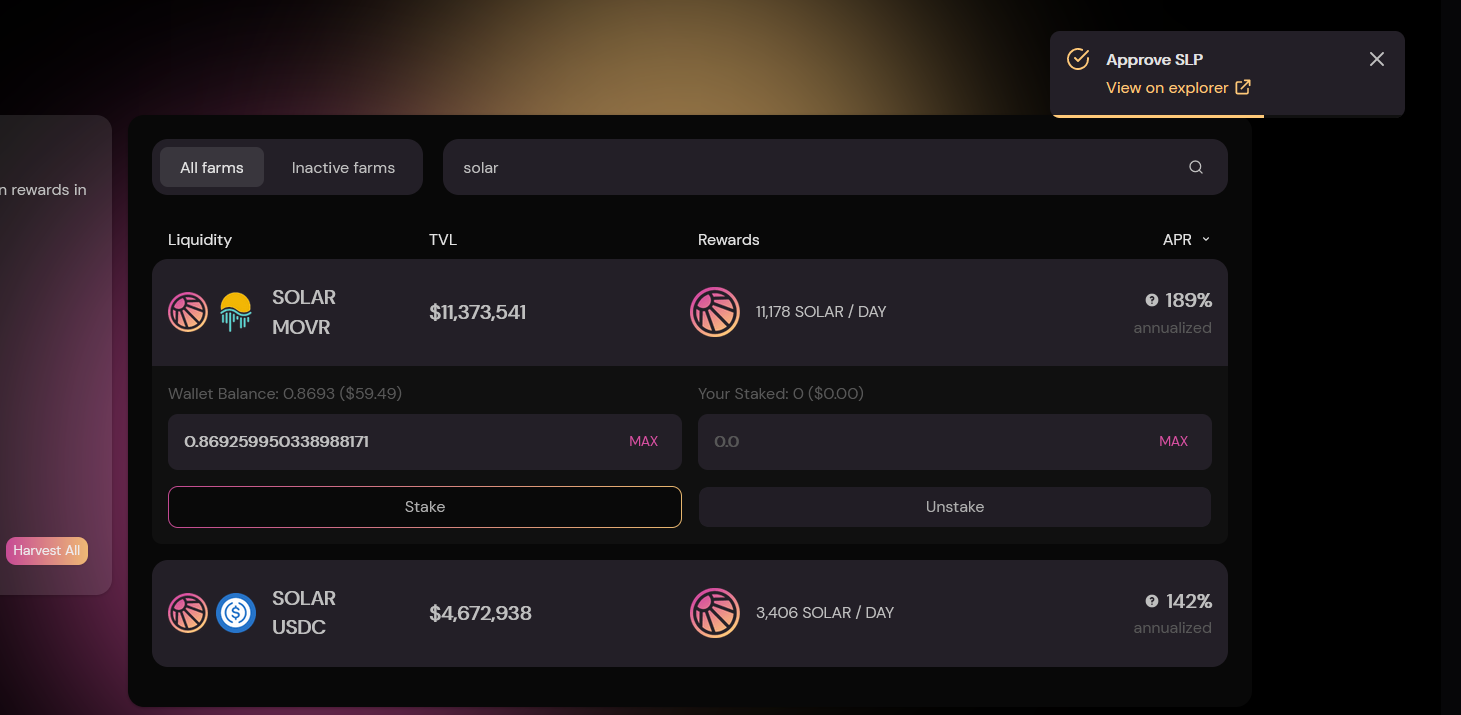
To harvest your rewards you can simply click on “Harvest”.
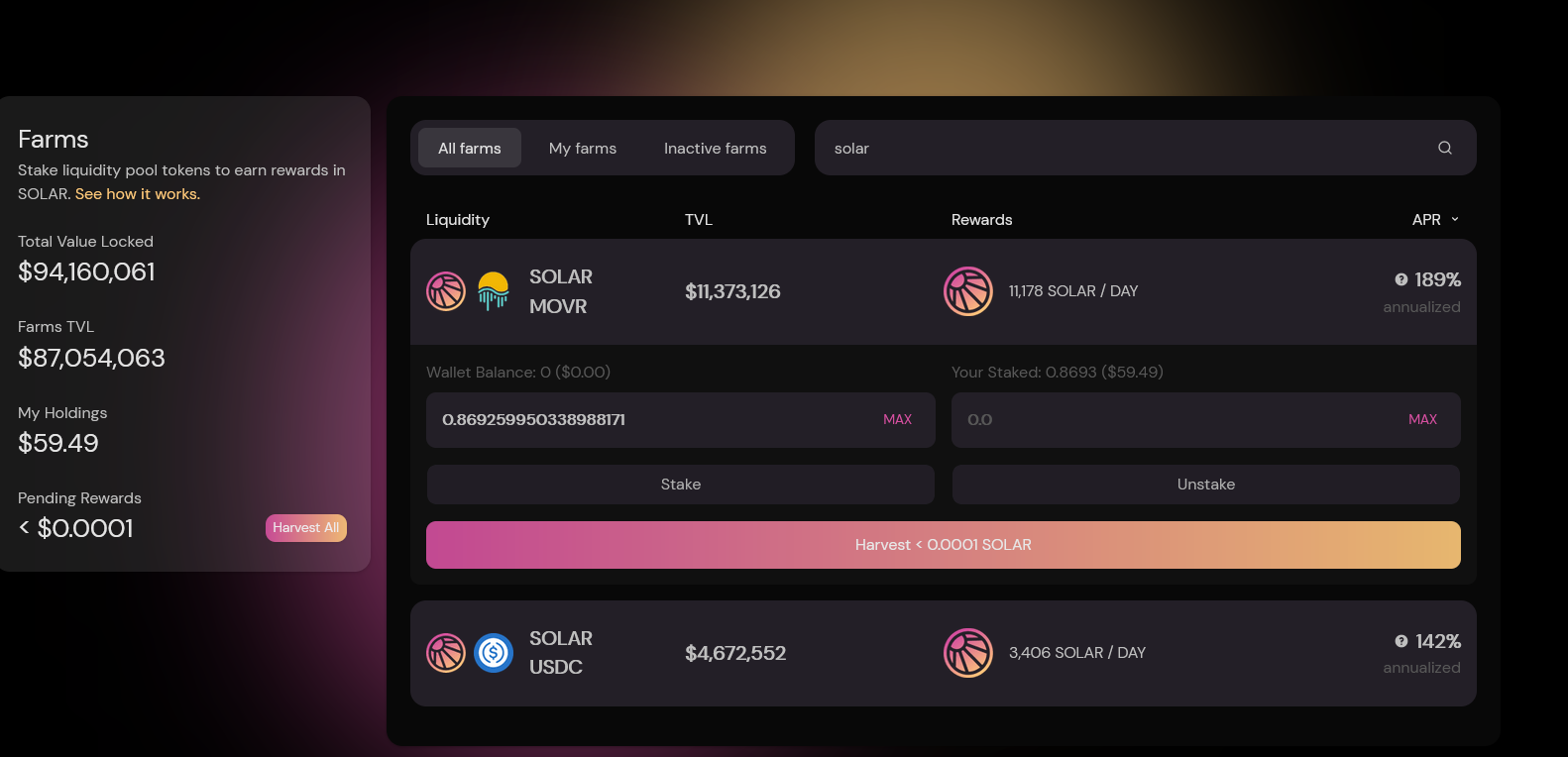
For anyone with an eye on the long-term, the Polkadot ecosystem looks like an arena where lots of blockchain innovation will occur. Right now though, that excitement is based on the Kusama Network and the parachains that are live and operational today.
Moonriver is one of only five names that can claim that status right now, so intrepid yield farmers should definitely be checking out the opportunities that exist there. This decentralized smart contract platform was specifically designed to make it easy for Dapp developers to deploy in a Substrate environment and penty of well-known DeFi projects have done exactly that.
For all these reasons, Moonriver looks like a great opportunity but, as always, this is not investment advice and you should always do your own research first.
Here you can check yield farming opportunities on Moonriver: https://de.fi/explore/network/moonriver
Tezos Ultimate Yield Farming Guide [Infographics]
Solana Network Ultimate Yield Farming Guide [Infographics]
Fantom Network Ultimate Yield Farming Guide [Infographics]
Huobi ECO Chain Ultimate Guide for Yield Farming
Polygon Network Ultimate Guide for Yield Farming
Binance Chain Ultimate Guide for Yield Farming
EOS Ultimate Yield Farming Guide
Arbitrum Ultimate Guide [Infographics]
The Ultimate Yield Farming Guide For Terra Blockchain (Luna) [Infographics]
The Ultimate Guide to Avalanche Network
Ultimate Guide to Yield Farming on Harmony (with infographics)
Ultimate Guide to Tron Network [Infographics]
And join us on twitter and telegram!
Good luck in farming!
October was a month of strong growth and ...
September was a month of global...
August was a month of major...
From major Explore Yields upgrades to...
June was a month of big releases and improvements across...
The end of May brought important updates across...
© De.Fi. All rights reserved.